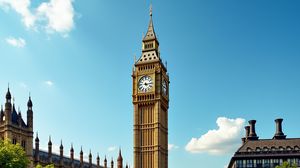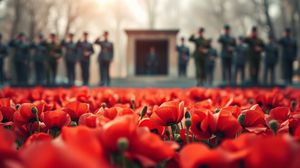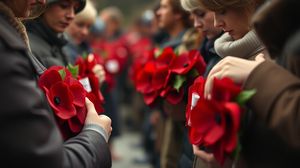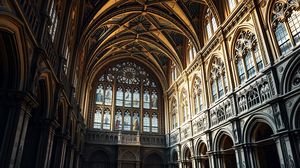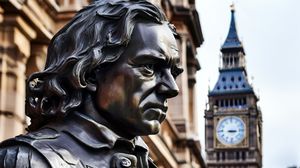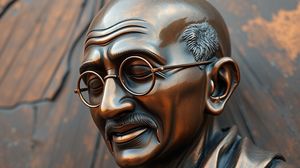
The Battle of Britain Memorial on Victoria Embankment is a poignant tribute to the bravery and sacrifice of those who took part in the Battle of Britain during World War II. Unveiled in 2005, the memorial consists of a stunning frieze that stretches across 25 meters, depicting scenes of the air battle and the immense effort from both the Royal Air Force and the British public.
One particularly captivating aspect of the memorial is the way it combines both high relief and into-the-round sculpture techniques, creating a dynamic representation of the air crew and other wartime figures. This approach gives the viewer a vivid sense of movement and engagement as if the scenes of 1940 are leaping out at them.
Adding a layer of surreal admiration, the central sculpture includes a lone pilot seated realistically amidst the narrative panels, drawing attention to the human element behind historic military strategies and technologies. This focus on the individual highlights the personal stakes experienced by servicemen during the conflict.
What many visitors find intriguing is the fact that the granite used for the memorial's base is sourced from Africa, symbolically linking the Commonwealth's role in supporting Britain's war effort. This detail shines a light on the global contributions to the Battle of Britain, often overshadowed in mainstream narratives.
Artists and historians alike appreciate the inclusion of technical schematics of aircraft and war gear within the memorial's design. These schematics almost appear as if drafted on the stone itself, connecting art with engineering and celebrating the innovation that was crucial during the air battles of World War II.
Another mesmerizing element of the block is the juxtaposition of tangible and ethereal as it plays with light. Throughout the day, natural sunlight casts shifting shadows over the intricately detailed figures, suggesting a timelessness to the tale of courage encapsulated here.
Although focused on a single chapter of wartime history, the memorial also serves as a place of reflection on the broader themes of sacrifice, resilience, and the collective spirit of a nation during times of crisis. By visiting, one taps into a shared heritage and honors the pivotal moments that shaped the outcome of World War II.

Making the Most of Your Visit:
Take your time to really appreciate the detailed frieze. The memorial is rich with intricate sculptures that tell stories of bravery and sacrifice. Spend a moment with each panel to truly engage with the history.
Visit on a sunny day if possible. The way that the sunlight plays across the sculptures creates shifting shadows and highlights that add an extra dimension to the art, making it feel even more alive.
Check out the nearby RAF Memorial, which is just a short walk along the Victoria Embankment. It complements the experience by providing another angle on the RAF's role during the war.
Have a quiet moment with the lone pilot statue. It's incredibly moving to reflect on the personal stories behind the uniform and think about the individuals who lived through such a pivotal time in history.
Look closely at the technical schematics etched into stone. They link art and engineering beautifully and emphasize the innovation that played a crucial role during the Battle of Britain.

Visiting Times & Costs:
The Battle of Britain Memorial on Victoria Embankment is open to the public at all times. It is located outdoors, so there are no specific operating hours or seasonal restrictions. Visitors are welcome to visit whenever they wish.
There is no entrance fee to view the memorial. It is freely accessible to everyone, and being a public monument, it does not charge admission.
As for accessibility, the memorial is situated in an open area along the Victoria Embankment, which is generally accessible. However, there may be some challenges for individuals with mobility issues due to uneven pathways or lack of designated parking immediately adjacent to the site. It's advisable to plan ahead and ensure that any specific accessibility needs are met when visiting.

Address & Map:

Nearby:



